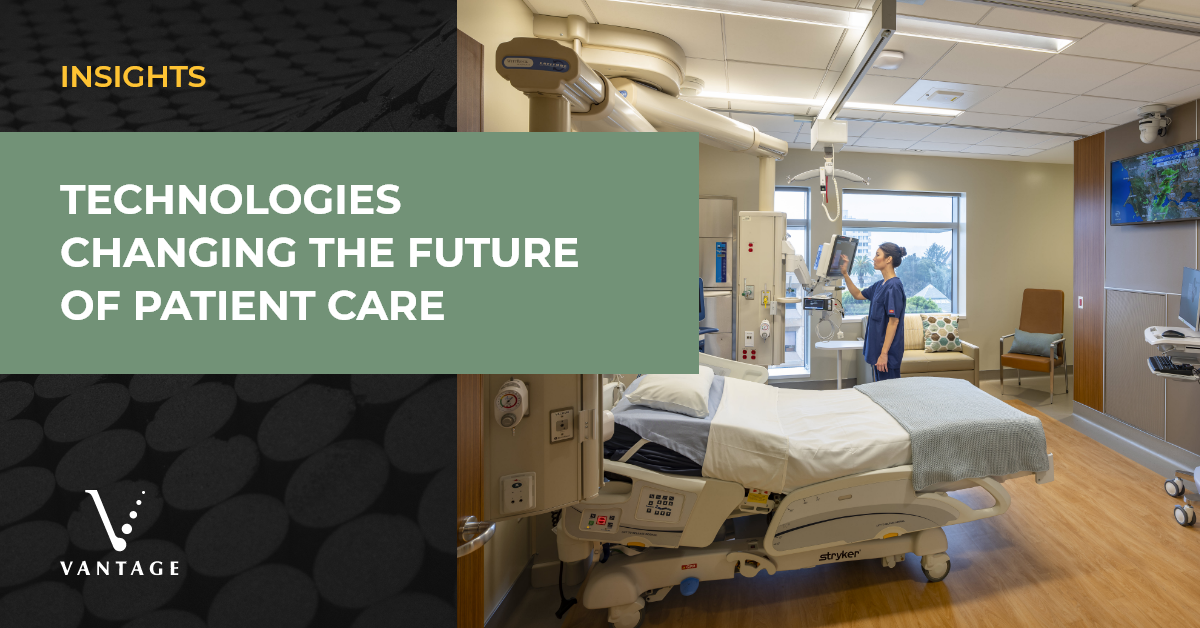Understanding the Strategic Implications of Technology is Critical in the Healthcare Industry
Expertise
In today’s healthcare environment, technology is a critical component that enhances the quality of care by connecting doctors, nurses, and other medical professionals with patients and visitors in varied and often complex ways.
We actively collaborate with our clients to develop a comprehensive understanding of how appropriate technology can be applied to support workflow process and enhance patient care through strategic technology planning, system design, technology project management and transition planning.
Our clients include major healthcare systems, academic medical centers and individual physician groups to deliver a full range of technologies for ambulatory care facilities, urgent care centers, medical office buildings, specialty hospitals and infrastructure upgrades that are supporting new educational and personalized healthcare and wellness models.
WHAT WE DO
Our broad-based experience in healthcare technology brings you valuable insights into technology advancements, integration best practices, and how to incorporate the right technologies into a healthcare facility more efficiently and cost-effectively.
SERVICES
- Healthcare Technology Visioning
- Planning and Programming
- Architectural Design Support
- Infrastructure Engineering
- System Design and Specification
- Project Management
- System Implementation Oversight
- Peer Review
- Data Center Planning and Analysis
- Technology Systems Design
- Construction Administration
- Technology Transition Planning
Vantage Web Series: Healthcare Technology Planning
Learn about how Vantage approaches Healthcare Technology Planning from Senior Principal and Partner, Phil Crompton.
Avoiding Technology for Technology’s Sake – Targeting Goals and Value
In this webisode Phil discusses the importance of choosing technology systems that create value for a healthcare institution and how Patient Engagement Systems are giving patients and families the ability to understand and participate in their care.
Healthcare Campus – The Case of the Haves and Have Nots
In this webisode, Phil explains the importance of technology planning for new buildings on existing healthcare campuses. Phil describes how to create a cohesive healthcare environment and avoid the inconsistent use of technology across old and new buildings.
The Pro’s and Con’s of Technology Solutions – Overcoming Perceived Disadvantages
Facial recognition, artificial intelligence, machine analytics, and other surveillance technologies can often engender negative connotations. In this webisode, Phil discusses the advantages of security and safety systems in healthcare facilities and how they can be a proactive resource for patient and staff safety.
Next Generation Digital Hospitals – The Benefits of Harvesting Data for Improved Operations
In this webisode, Phil explains how the #DigitalTwin of a hospital offers the opportunity for institutions to utilize data to make informed decisions on staffing, resources, and building improvements. Phil also describes how the data harvested from the myriad of sensors in next-generation hospitals can be combined with a digital twin to run simulations of future events and develop disaster response plans.
Healthcare Technology Vision and Innovation – Technology Briefs
Healthcare technology is continuously evolving. When appropriately integrated into new construction and major renovation projects, it can promote patient and family member engagement, improve workflow and processes, and enhance staff satisfaction. However, each new technology can bring its own set of risks, including concerns over potential capital and operating costs, the ability to deploy and support, and information security and privacy. In this fast-paced environment, a balanced, value-based perspective is essential, and the Vantage Technology, Vision, and Innovation team can provide you with that insight.
The Vantage Tech Briefs below explore some of the technologies that are impacting care (in the patient room and throughout next-generation hospitals and healthcare campuses) and enhancing the broader healing environment. Each brief provides a concise overview of each technology and its associated needs, benefits, and risks.
HEALTHCARE CLIENTS
- Adventist Health Tehachapi
- California Pacific Medical Center
- Cedars-Sinai Medical Center
- Children’s Hospital Los Angeles (CHLA)
- City of San Francisco Health Services
- Community Hospital of the Monterey Peninsula
- Coney Island Hospital
- Cooper University Hospital
- Henry Mayo Newhall Memorial Hospital
- Huntington Memorial Hospital
- John Muir Health
- Kaiser Permanente
- Kern Medical Center
- Laguna Honda Hospital
- Lawrence Berkeley National Laboratory (LBNL)
- Los Angeles County Health System
- Miller Children’s Hospital
- NYU Langone Medical Center
- Ohio State University Wexner Medical Center
- Providence Tarzana Medical Center
- Saint John’s Health Center
- Scripps Prebys Cardiovascular Institute
- Shantou Cancer Hospital
- Sutter Health – Bernal Campus and Van Ness & Geary Campus
- UC Davis Health
- UCLA Health Services
- UCLA – Edie and Lew Wasserman Building
- UCSF Medical Center
- US Dept of Defense
- US Dept of Veterans Affairs
- USC Health System
- Valley Hospital
- Ventura County Medical Center
- Veterans Health Administration

